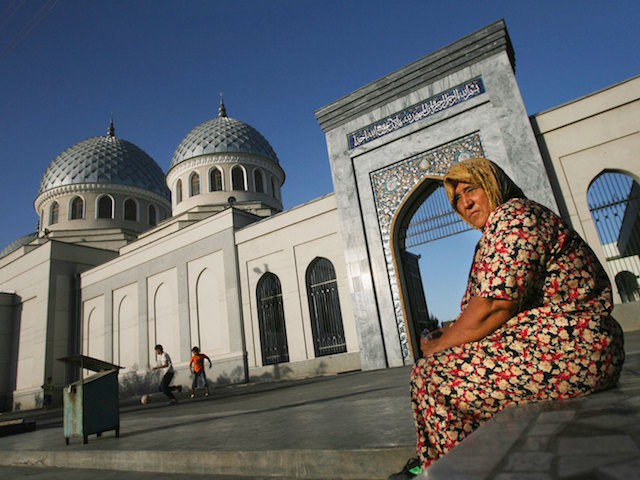Uzbekistan is one of two top countries that has produced most of the jihadists currently fighting and killing U.S. troops and their allies in Afghanistan on behalf of the Islamic State (ISIS/ISIL) branch in the region, according to Pentagon and Afghan officials.
On Tuesday, ISIS-affiliated jihadist Sayfullo Saipov from Uzbekistan killed eight people and injured at least 11 in a vehicle attack on the West Side of Manhattan.
In turn, ISIS has claimed responsibility, praising him as a “soldier of the caliphate,” reportedly without evidence.
Breitbart News explored the extent to which jihadists from Uzbekistan are linked to the ISIS branch operating in neighboring Afghanistan. Along with defectors from the Afghan Taliban, the majority of ISIS jihadists in Afghanistan are terrorists from groups native to neighboring Uzbekistan and Pakistan.
Some Uzbeks are reportedly indoctrinated and radicalized to be devout ISIS fighters from the time they are children.
In recent months, the United Nations revealed that the Islamic State branch in Afghanistan, known as the Khorasan province (ISIS-K), has drastically intensified their attacks and expanded its reach from one to seven provinces, courtesy of the hundreds of jihadists in their ranks—most of them from Uzbekistan and Pakistan.
“The situation in these [ISIS-K controlled] areas is worrisome. … Fighters from Uzbekistan have settled along with their families in some remote mountainous areas and have been trying to recruit locals into their ranks,” Khaleqdad Akbari, head of the Ghazni provincial council, told Voice of America (VOA) in November 2016.
U.S. officials have acknowledged that ISIS-K is primarily made up of former members of the Pakistani Taliban known as Tehrik-e Taliban (TTP) and Uzbek fighters from the Islamic Movement of Uzbekistan (IMU).
In December 2016, Gen. John Nicholson, the top commander of U.S. and NATO troops in Afghanistan, told reporters, “Islamic State Khorasan today is formed of members of the Tehrik-e Taliban Pakistan, the Islamic Movement of Uzbekistan, and even some former members of the Afghan Taliban.”
The proportion of the number of TTP terrorists loyal to ISIS versus those from the Uzbek IMU is unclear.
However, the U.S.-backed Afghan forces had drastically depleted the number of ISIS-K fighters in Afghanistan by about 80 percent—from a peak of about 3,000 around 2016 to about 700 as of early this year.
So, there are possibly a few hundred terrorists from each group—TTP and IMU. In November 2015, Reuters suggested there could have been up to 400 Uzbeks fighting for ISIS at the peak of the group’s strength.
Following the defeat of their chief, jihadists from Uzbekistan and Pakistan have been vying for control of ISIS-K in recent months, a dispute that has led to infighting.
Uzbekistan cracked down on militant Islam after the demise of the Soviet Union under the secular rule of its long-term leader Islam Karimov—to no avail.
Under ISIS-K, Uzbek jihadi operations have expanded beyond the Afghanistan-Pakistan region into Iraq, Syria, and Turkey.
In recent years, the U.S. Department of Homeland Security (DHS) has apprehended at least seven potentially radicalized Uzbeks trying to sneak into the United States.
That means up to three may have successfully entered America illegally given that for every ten caught, four get through.
Referring to Islamic State (IS) Uzbek fighters in Iraq and Syria, home to the group’s ever-shrinking caliphate, BBC reports:
They have been trained and radicalized there. The return of these militants will pose a new threat and might strengthen the existing IS infrastructure in the region.
Such developments further complicate the conflict in Afghanistan and pose a long term risk to regional stability.
While terror-linked Uzbekistan borders Afghanistan in the north, jihadi sanctuary Pakistan is the war-devastated nation’s southern neighbor.
According to the Pentagon, the Afghanistan-Pakistan border region remains home to the largest concentration of terrorist groups (20) in the world, including al Qaeda, the Haqqani Network, Lashkar-e- Tayyiba, Tehrik-e-Taliban Pakistan (TTP), ISIS-K, and the Islamic Movement of Uzbekistan.
Uzbeks are predominantly Sunni like the Taliban and ISIS.

COMMENTS
Please let us know if you're having issues with commenting.